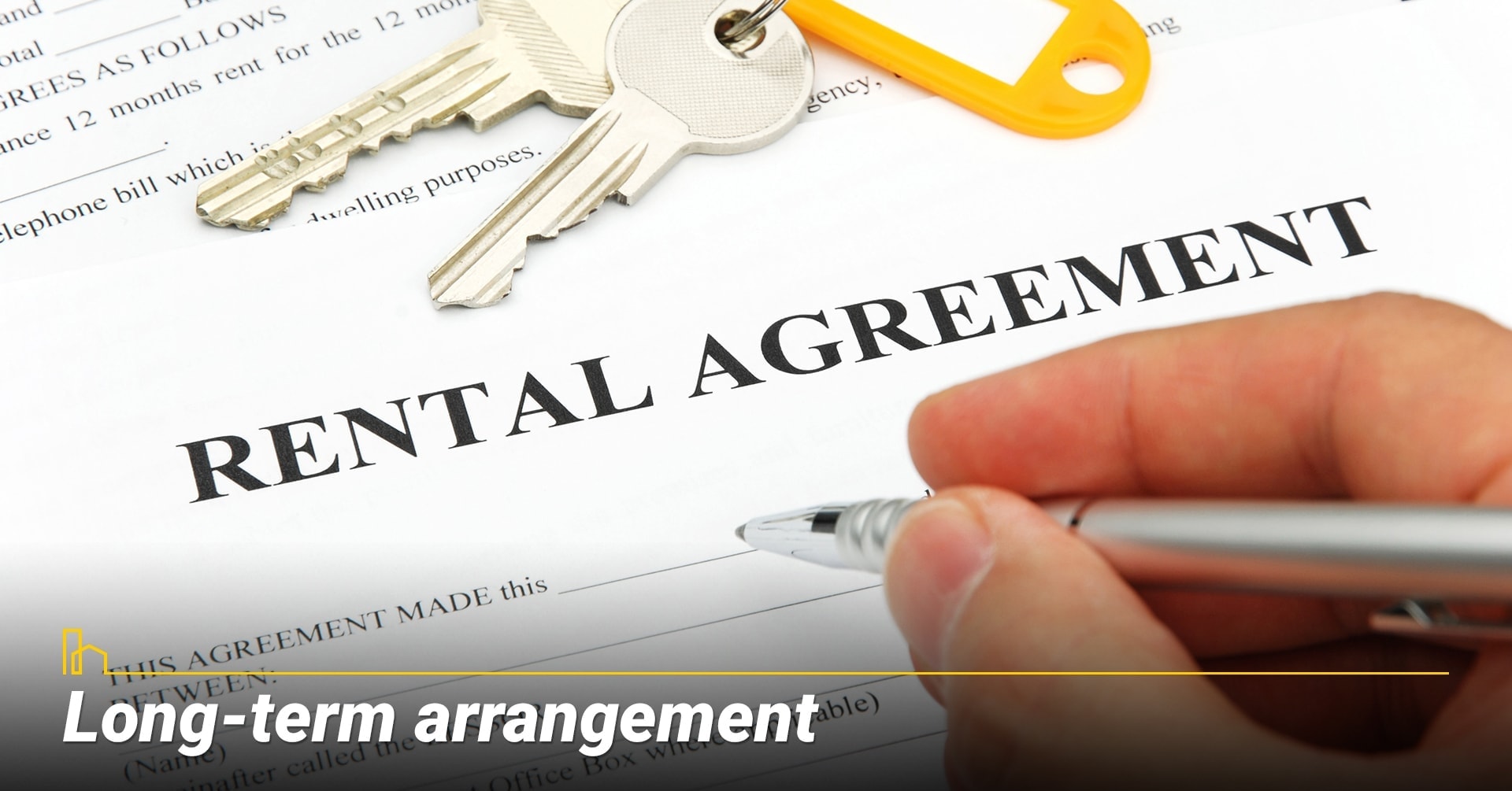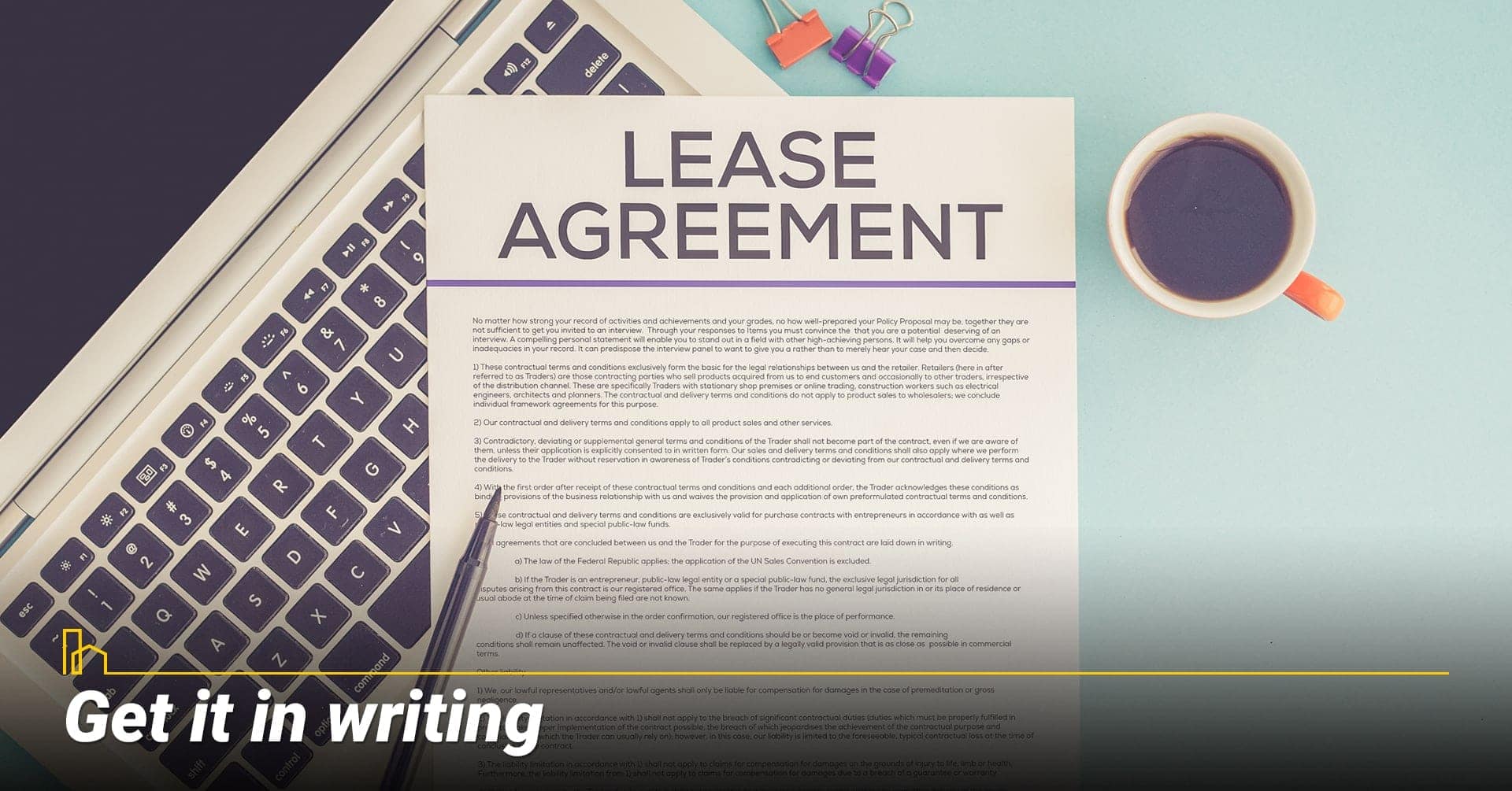Subletting Apartment: What it means, How to do it right, and Who should do it
- Author:by The HOMEiA Team
- Category: Buy House , Real Estate Investing

When you signed or last renewed your lease, you had no intention of moving out anytime soon—surely not within a year. But then life threw you a curveball.
You’ve been offered your dream job in another state. Your long-lost great uncle has died and left you his Victorian mansion. Or you’ve heard the call of the open road and decided it’s time to sell all your belongings and experience #VanLife.
Whatever the reason, you’ve come to realize that you need to move out soon, despite having months left on your lease.
What is a tenant to do?
Then a word pops into your head—one you’ve heard from time to time but never gave much thought: sublet.
Should you sublet your apartment? What exactly does that mean, anyway? And how do you do it right?
Below are Key things you should know BEFORE subletting your apartment:
Table of Contents:
1. Long-term arrangement

First, it’s helpful to consider how a typical lease works.
When you sign a lease, you’re entering into a legal agreement with your landlord that says, above all, that you will pay a certain amount per month in exchange for the right to live in the building.
Most often, the lease will be in force for a particular amount of time—the “term”—and that term is typically one year.
As you approach the end of the term, you have to decide whether to stay or go.
Want to move out? Just provide written notice to your landlord according to the lease’s requirements. Your lease agreement will expire as the term ends, and you’ll be free of its obligations.
If you want to stay, you have to sign an extension to your lease—giving the landlord an opportunity to raise rates or add restrictions, and giving you the opportunity to negotiate before committing.
The 10 Best Places to Live in Oregon
Oregon is a study in contrasts. It has 363 miles of the most breathtaking coastline you’ll encounter anywhere in the world. But it also has dense forests, mountain ranges, and high desert country. Here’re the 10 Best Cities to Live in Oregon…
2. Change of plans

So, what happens when you’ve committed to paying rent until next year, but fate intervenes, and you need to move out sooner? Do you have to pay rent for the rest of your term, on top of the costs of your new place?
In the worst-case scenario, yes—but there are usually better options.
One such option is a sublease your apartment.
Recommended for you
3. A Substitute for a full-term lease

When you sublet your apartment, your lease continues, but you rent out your unit to someone else for part of the term.
Think of the landlord as your boss, and paying rent each month is your job. You can delegate some of your work (some months of rent payments) to another worker, but you’re ultimately responsible for getting all the work to your boss in a timely manner.
The term “sublease” usually describes the agreement itself. “Sublet” can refer to the property itself, and it can also refer to the action of renting all or part of the unit to someone else for part of the term. In practice, though, the words are often used interchangeably.
10 Most Affordable States to Buy a House in 2024
If you have the flexibility to move anywhere in the U.S., where could you buy the cheapest home? After examining data from Zillow and World Population Review. Here’re 10 most affordable States in the South and the Midwest to consider when buying a house in 2024…
4. Why sublet your apartment?

A number of situations can prompt a tenant to sublet, but what they all have in common is that the people occupying a rental will change at some point during the original lease term.
The original tenant may move out permanently (due to a new job, change in relationship, change in financial situation, etc.) or temporarily (study abroad, internship, etc.).
A sublet situation can also arise when there is a change among roommates—for example, if one roommate moves out while the others remain and a new roommate is brought in.
The major benefits for the original lessees are that someone else pays the rent while they’re absent, and they don’t have to break the lease. If the absence is temporary, they may also be able to leave their belongings in the care of a built-in house sitter.
For sublessees, the benefits may include a shorter rental period (if they don’t want to lease for a full year), the ability to try out an area before buying or signing a full-term lease, or even getting a lower rate—sublessors may offer a discount to find an occupant quickly.
10 Most Affordable Places to Live in Michigan
Michigan is the only state in the United States with two separate peninsulas and five surrounding Great Lakes. Its landscape is diverse, ranging from industrialized skylines to sweeping sand dunes to gorgeous waterfalls. Once home to Henry Ford, it’s also considered the epicenter of America’s…
5. Make sure subletting your apartment is allowed

Before you proceed, you need to make sure it’s okay to sublet your rental. The first place to start is your lease itself. Review it for any restrictions against subletting, or stipulations about how to proceed.
Then look into local and state laws—in some places, lessees have the right to sublease regardless of the property manager’s permission, while others allow the practice unless the lease specifically prohibits it. There may also be local restrictions or procedures.
Next, ask your landlord for sublet permission. If you are denied against what you know to be the law, share the legal information you found with the landlord and request that they review it since you would like to proceed.
When the landlord or property manager has the legal right to forbid subleases, explain the reason for the situation and ask them to reconsider. If you still don’t succeed, you may need to find an alternative solution.
If you do get permission, get it in writing. Ask your property manager for a sublease template you can review and modify.
Recommended for you
6. Risky business

Subletting your apartment when you’re still responsible as the original tenant can bring with it some risks. The main ones are payment liability and property liability.
a) Payment liability. Since it’s still your lease, it’s still ultimately your responsibility to make sure the rent is paid. If your sublessee doesn’t pay, you may forced to do so.
b) Property liability. If your sublessee damages the rental unit, you can be held accountable.
The first step toward reducing your risk is to find a trustworthy subtenant. Ask around in your network—you may have co-workers, friends or extended family who are interested.
Then look at Facebook Marketplace and subleasing-specific sites like LeaseBreak.com, Sublet.com or SpareRoom.com. Make sure to keep your eyes open for possible scams.
Screen your applicants carefully. Call their references, ask them for their rental history and request their credit scores. You may wish to run a criminal background check.
If you have roommates who will remain in the lease, they must sign off on the sublease, so involve them in the process of filling the vacancy.
Once you’ve found the right person, make sure that they have a chance to speak with the property manager—and get the property manager’s approval. If you live in a condo or co-op, your new subtenant might need to be approved by the board, too.
10 Most Affordable Places to Live in Oregon
Geographically, Oregon boasts dramatic Pacific coastlines as well as volcanic mountain ranges. Its climate spans from rainforests along the coast to semi-arid conditions in the central and southeastern regions. The Beaver State is home to both Crater Lake, the deepest lake in the U.S., and Mount Hood, the second-most-climbed mountain in the world…
7. Mitigating risk

Legally speaking, there are two types of sublet. In one, the original renter and the subletter are co-tenants, and they are “jointly and severally liable,” meaning the landlord can come after either or both for unpaid rent or damaged property.
In the other setup, the original tenant becomes a landlord to the new one. This arrangement comes with a few specific differences; for example, the original renter may have to give notice before entering the property. In this case, if the original tenant loses the lease, the sublessee does, too.
There are many steps you can take to reduce the risk of subletting your space. Here are a few:
- A. Get a damage deposit. The landlord might require one, too—be sure to check. The amount and timing should be included in the sublease document.
- B. Check your insurance. If you’re leaving property in the unit, make sure your renter’s insurance will still cover it.
- C. Check out of the space and let the new person check in. The best way to ensure that you get your own security deposit back is to have the landlord check out the space, notify you of anything for which you’ll be charged, and settle financially. Then the landlord can check in the new tenant and collect a new deposit.
- D. Do a walk-through and take pictures. Take the new tenant through the unit and document the condition of the property.
- E. Have the sublessee pay rent to the property manager. Take out the middle person (you) to make sure the money gets to the landlord and there is no chance for someone to claim they paid you and you kept it.
- F. Get roommates on the same page. If roommates are staying on as you leave, make sure they approve the new subtenant. The subtenant should also be informed of the house rules and any roommate agreement that is in place.
10 Most Affordable Places to Live in Florida in 2024
With year-round warm weather and over 8,000 miles of coastline, it’s no wonder Florida is a prime vacation destination. Filled with wildlife, beaches, lakes, rivers, amusement parks, diverse entertainment options and much more, the population of Florida is growing with people that want to call Florida “home,” soak up the sun…
8. Get it in writing

The sublease is amended to your original lease. It should lay out who is responsible for what, and when. Start with the landlord’s template or find one online. Be sure to consider:
- a) How much will be due each month
- b) Payment deadline
- c) Beginning and ending dates of lease
- d) Move-in and Move-out dates
- e) Prorated rent for partial months
- f) Who will pay whom
- g) Security deposits
- h) Utility payments
- i) Parking fees/restrictions
- j) List of what stays with the unit and what does not
- k) Utility payments process
Recommended for you
9. Alternatives

Before you go forward with a sublease, stop and consider whether it’s really the best option for your situation.
In many cases, breaking your lease might be a better choice, despite the severity of the phrase. If you break your lease, the original lease is voided. You may have to keep paying rent, though, until a new tenant takes over.
Breaking the lease removes the two main risks of a sublease: payment liability and property liability. You will have no ongoing liability once the replacement is found.
You won’t be responsible for finding someone to take over, although you may be able to reduce the time during which the rental is vacant by helping the landlord with publicity. Ask how you can help.
There are risks to breaking a lease, too. You could owe a fee—maybe one to two months’ rent—and you may lose your deposit. It’s theoretically possible the landlord could sue you, or that it could hurt your credit score, but that’s highly unlikely unless you have a poor relationship with a litigious landlord.
The 10 Best Places in the USA to Retire on the Water for Less
The popularity of the waterfront can mean high housing costs and consumer prices. Luckily, for those willing to look past the likes of Malibu and Venice Beach, there are plenty of scenic spots along the country’s lakes and oceans where retirees can make a nice home even with a reduced…
Conclusion
Subletting your apartment is not without challenges and risks, but in some cases, it is the best way to get out of a lease before your time is up. Take the time to do it right—with permission, verification and proper documentation—and you can move on from your lease without a problem.







































































































































